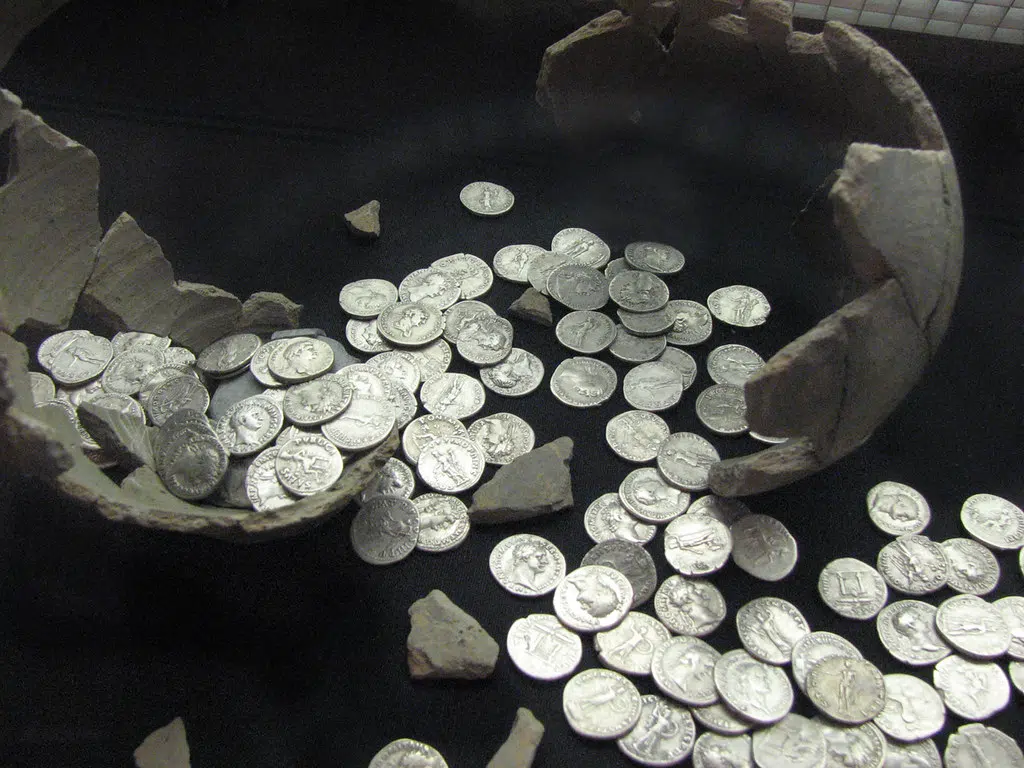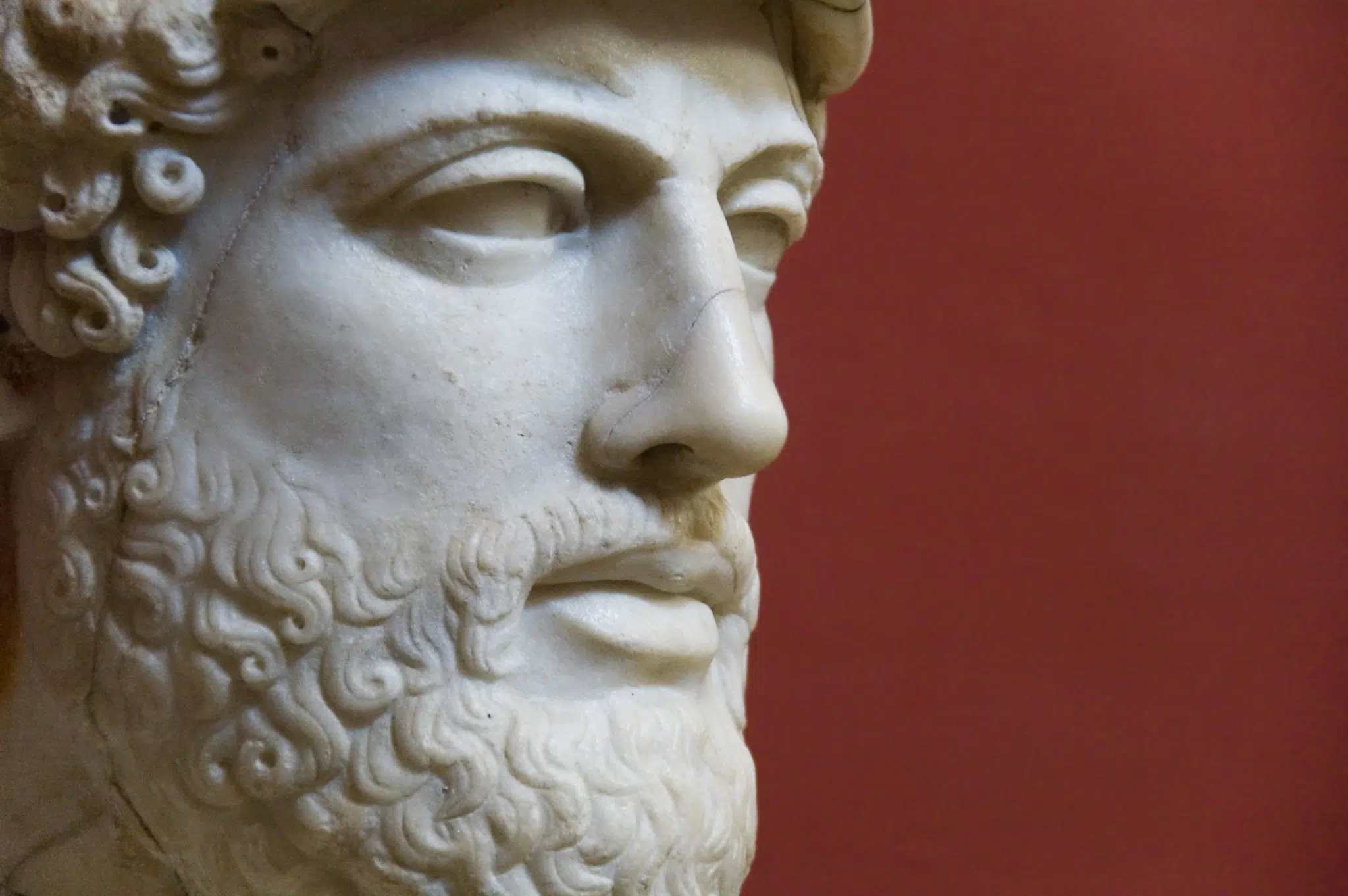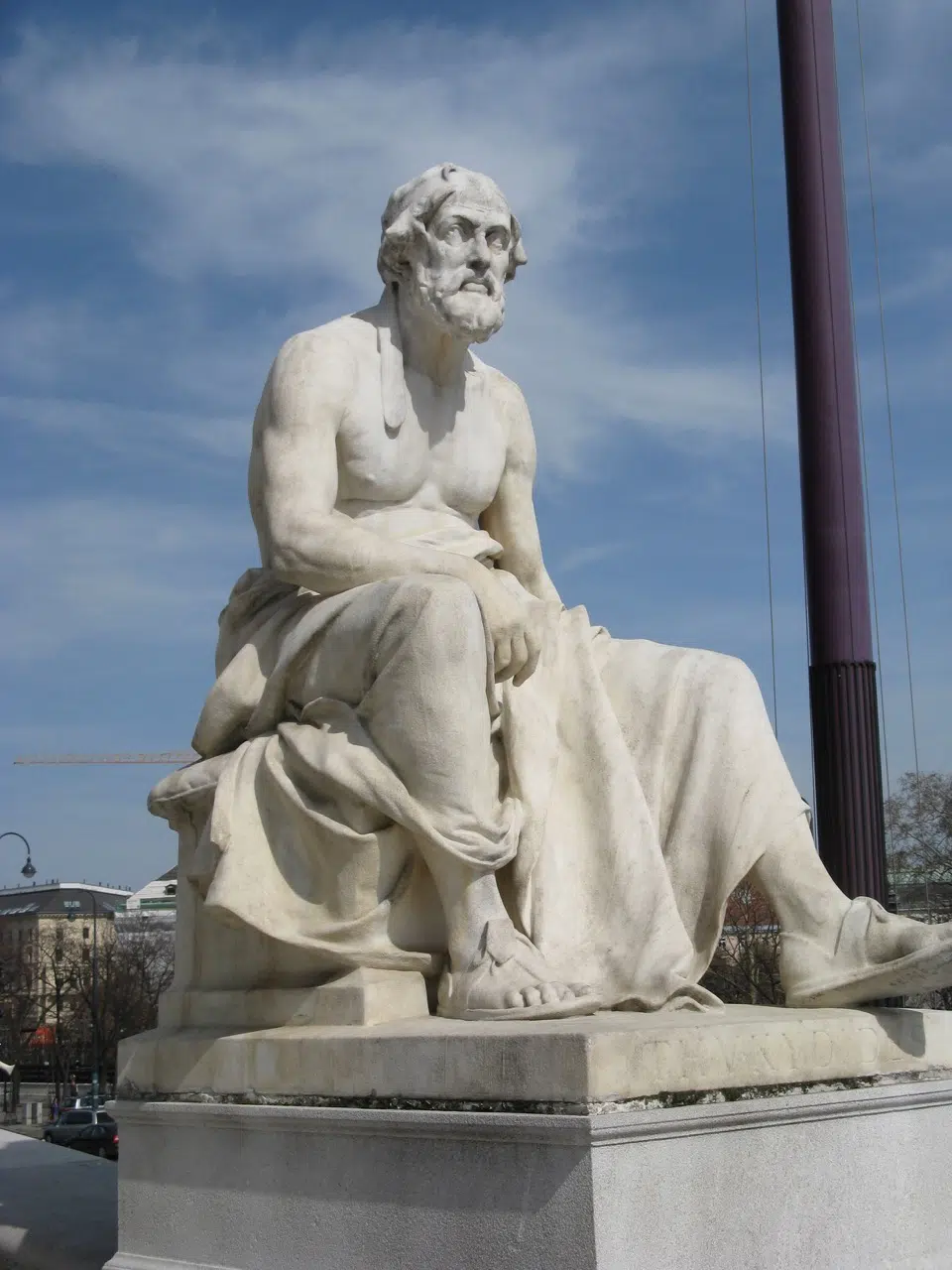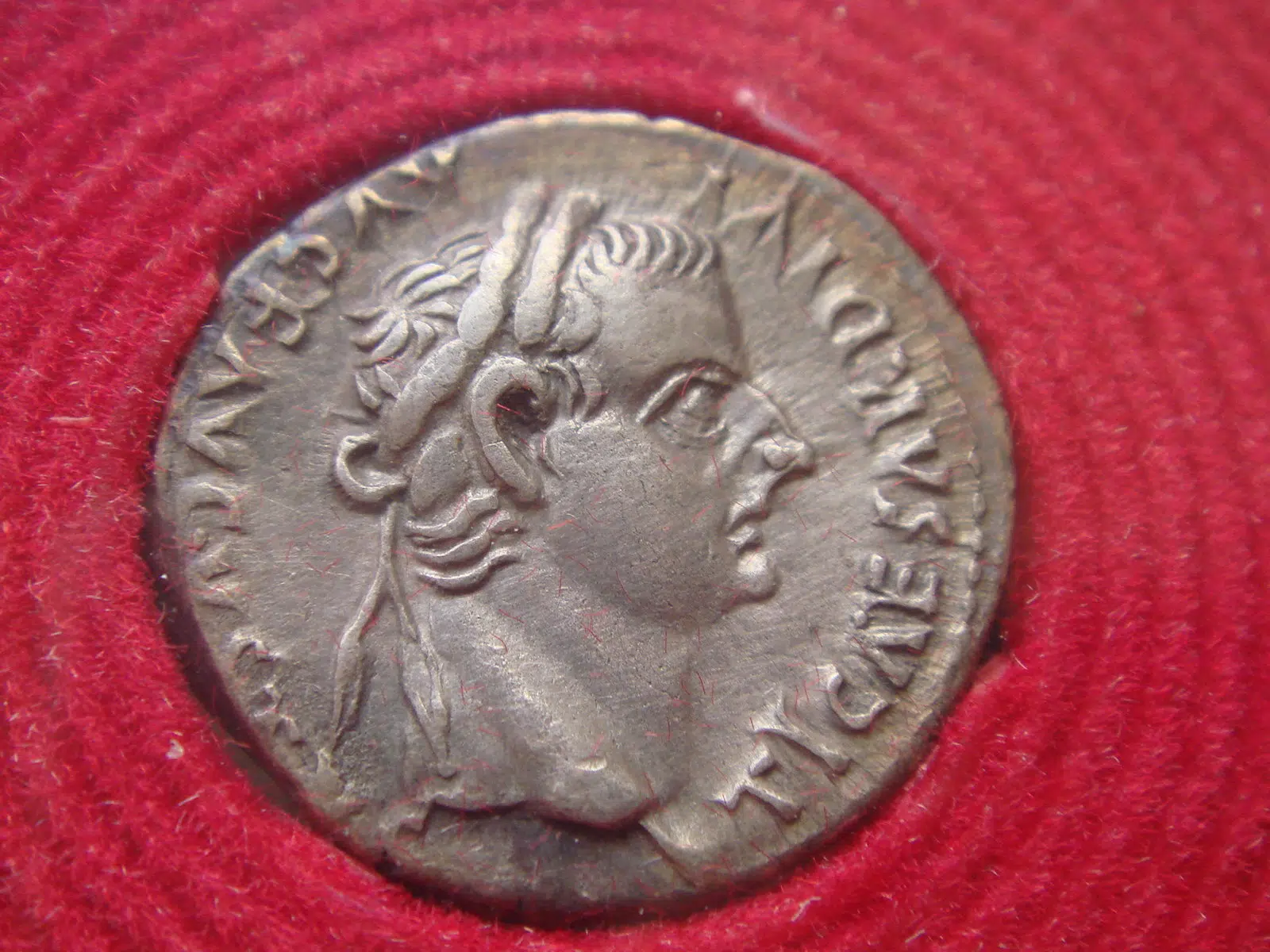
The ancient Greeks and Romans were responsible for some of the world’s earliest banking systems, with the Athenians developing a sophisticated banking system in the 5th century BC that would eventually influence economies throughout the Greco-Roman world.
Modern Western culture owes a huge debt to the ancient Greeks and Romans, being that writing, religion, government, and all types of art came to medieval Europe through these ancient civilizations. Banking is yet another concept that has its origins in the Hellenic world, albeit its influence on medieval Europe was not so direct.
The aforementioned Athenian banking system, developed in the 5th century BC, was adopted by Hellenistic kingdoms, and later the Romans would expand on this system with their own monetary practices.
The Treasury of the Delian League
In the intervening years of the Greco-Persian Wars (499-449 BC) and the Peloponnesian War (431-404 BC) Athens grew to become the foremost Greek city state, with the Athenians achieving their status through a combination of clever political moves, naval prowess, and effective economic policies.
Another key factor contributing to Athenian dominance in the Hellenic world was the control it had over the Delian League. The Delian League started out as an anti-Persian alliance of Greek city-states in 478 BC, during the mid-stages of the Greco-Persian Wars. Although Athens was the head state in the league, the ships and gold the alliance shared were originally held on the island of Delos.
Other major cities which had significant sanctuaries, such as Delphi and Olympia, also had notable treasury houses. These early treasury houses were a mixture of sacred, state, and financial institutions, storing many goods including votive offerings, cult statues, weapons, gold, and silver.

The cunning Athenian statesman Pericles saw huge economic potential in this system and thus decided to move the Delian League’s treasury to Athens in 454 BC.
When Pericles and the Athenians took control of the Delian League’s treasury, it led to the Greco-Roman economies following a new path. The Athenians decreed that their allies would adopt Athenian coins, weights, and measures, thus raising Athens’ economic rank in the ancient Greek world. The decision also meant that the Athena cult would essentially become the Bank of Athena.
The Ancient Greek Bank of Athena
The Parthenon atop the Acropolis in Athens was another marvel achieved under the reign of Pericles. Dedicated as a temple for the city’s patron goddess Athena, the Parthenon also started to operate as a bank during the Peloponnesian War. The ancient Greek historian Thucydides wrote about how the Delian League’s war effort was funded by this Bank of Athena:
“Their strength came from the financial income they paid and that, for the most part, success in war was a matter of judgment and abundant revenues. He told them they could take confidence, since six hundred talents in tribute usually came in every year from the allies apart from other revenue, and on the Acropolis there was still six thousand talents in coined silver remaining at that time (the largest amount had been nine thousand seven hundred, from which they had made expenditures for the gateway of the Acropolis and the other buildings as well as for Portiada) and, apart from that, uncoined silver in private and public dedications, and there was all the sacred equipment for processions and contests and booty from the Mede and everything else of that sort, not less than five hundred talents; going further, he added the considerable amount from the other sanctuaries.”

Bullion from the Parthenon along with golden statues were used to produce minted coins, however, the banking processes at the Athena Temple were not limited to holding and minting currency. The temple made interest-laden loans for secular purposes, which it then used to fund the war effort and building projects. The lending and borrowing procedures of the Bank of Athena quickly took on the character resembling that of a modern bank.
A further decree from the authorities in Athens created a board of treasurers who oversaw the operations of the Athena treasury. The board of treasurers looked after everything, not just for the Athena Bank, but also for the other local sanctuaries. Records show that each deity had property and capital assigned to them that were listed separately.
This Athenian banking system was relatively effective in the early stages of the Peloponnesian War, however, this changed as the war went on. Once the Spartan-led Peloponnesian League gained the upper hand, the Athenian banking system started to experience serious monetary problems.
By the end of the fiscal year 423/422 BC, the Athenian debt to the sacred treasuries had hit 5,600 talents (the unit of weight to measure gold, silver, and other precious metals) with an accumulated interest of 1,400 talents. Spartan victory in the war was the final nail in the coffin for Athenian dominance, but Athenian banking concepts survived.
Banking in the Hellenistic World
After Alexander the Great’s death in 323 BC, his vast empire was divided by his generals into several kingdoms, bringing in the beginning of the Hellenistic era. This period was marked by the proliferation of ancient Greek art, language, and culture in general, which included coinage, monetary theory, and banking. Greek-inspired banking and economics were most evident in Ptolemaic Egypt.
Egypt was a suitable host for the new, ancient Greek banking and monetary ideas because it was home to pre-existing advanced economic concepts. Records from ancient Egypt indicate that from around 3,100 BC the Egyptians used weights and measures that functioned as a type of currency.
In the 12th dynasty (c. 1,985-1,773 BC), the ancient Egyptians standardized these weights into a sophisticated system, with the deben being a unit of measurement equal to around 93.3 grams, and a kite being equivalent to just under 10 grams. One deben equaled 10 kites.
The deben was used to measure copper, silver, or gold, while the kite was used only to measure the more precious metals of gold and silver. This system of early currency made it far more probable that the ancient Egyptians would assimilate the other advanced economic concepts introduced by the Ptolemies.
The second king of the Ptolemaic dynasty, Ptolemy II, commissioned several major projects. He funded the construction of the Lighthouse of Alexandria and likely the Library of Alexandria, but the latter was probably started during the reign of his father.
A canal that connected the Red Sea to the Mediterranean Sea was also built during Ptolemy II’s rule. All of these momentous projects came at a cost, requiring efficient monetary and banking policy to support them.
Ptolemy II set out to complete these significant public projects while adopting some Greek banking and monetary policies. Coin currency made transactions between individuals easier, but it also helped bring about the emergence of banking in Egypt.

Ptolemy I introduced coinage to Egypt, which was based on the drachma used across the Greek world, but due to a lack of silver mines in Egypt, the Ptolemaic drachma weighed less than other drachmas and those used in Egypt were made of bronze.
The number of bronze coins in circulation increased greatly during Ptolemy II’s reign, partially due to the requirement to pay taxes with coins. The universal yet cumbersome nature of hard currency meant that a banking system was needed for the collection of taxes and the loaning of credit.
Ptolemy II supervised the creation of a banking system in Egypt which borrowed from the Athenian system, but added some details of his own too. Both state and private banks were licensed and franchised by the crown, with at least one bank in the capital of every nome (province).
Royal banks collected coin taxes and both royal and private banks gave lines of credit and loans to private individuals at the astonishing rate of 24 percent. This high, fixed interest rate prevented the development of a credit and debt economy.
Roman Banking and Economic Policies
It was not only the Ptolemies who took banking inspiration from the ancient Greek world, the Romans too initiated their banking system and monetary policies from Greek ideas.
The first Roman silver coins were likely minted to commemorate the completion of the Via Appia from Rome to Capua in 312 BC. Rather than using the widespread drachma as a currency standard, the Romans created the silver denarius as their standard coin.
On top of the denarius, the Romans also minted the sesterce, a bronze coin. Four sesterces were equivalent to one denarius, and in the lower denominations, four copper As was equal to one sesterce. As the coin which carried the medium value among the three denominations, the sesterce was the most commonly used coin for transactions between individuals.

Roman coins were worth their weight in silver, bronze, or copper, but the state also held large amounts of gold. The coins were also minted by the state, which is where Roman banking and monetary theory came from.
Romans generally thought of banking as a low-status profession, which is likely because making money from interest on loans was seen as an unworthy profession. Not all Roman banks and bankers profited from interest, however it seems several did, and many utilized relatively modern monetary policies such as fractional reserve banking.
This means the banks that practiced this policy would lend a portion of their reserves at interest. Roman records convey that loans were referred to as a nomen or nomina (name), as they referred to the names of the debtors.
Roman banks operated similarly to the Ptolemaic model, with the state bank having a monopoly on minting but also permitting private banks. Banks and bankers were further divided into two main categories by function. The faeneratores were moneylenders who functioned like modern brokers and intermediaries, while argentarii could be likened to traditional bankers.
See all the latest news from Greece and the world at Greekreporter.com. Contact our newsroom to report an update or send your story, photos and videos. Follow GR on Google News and subscribe here to our daily email!



